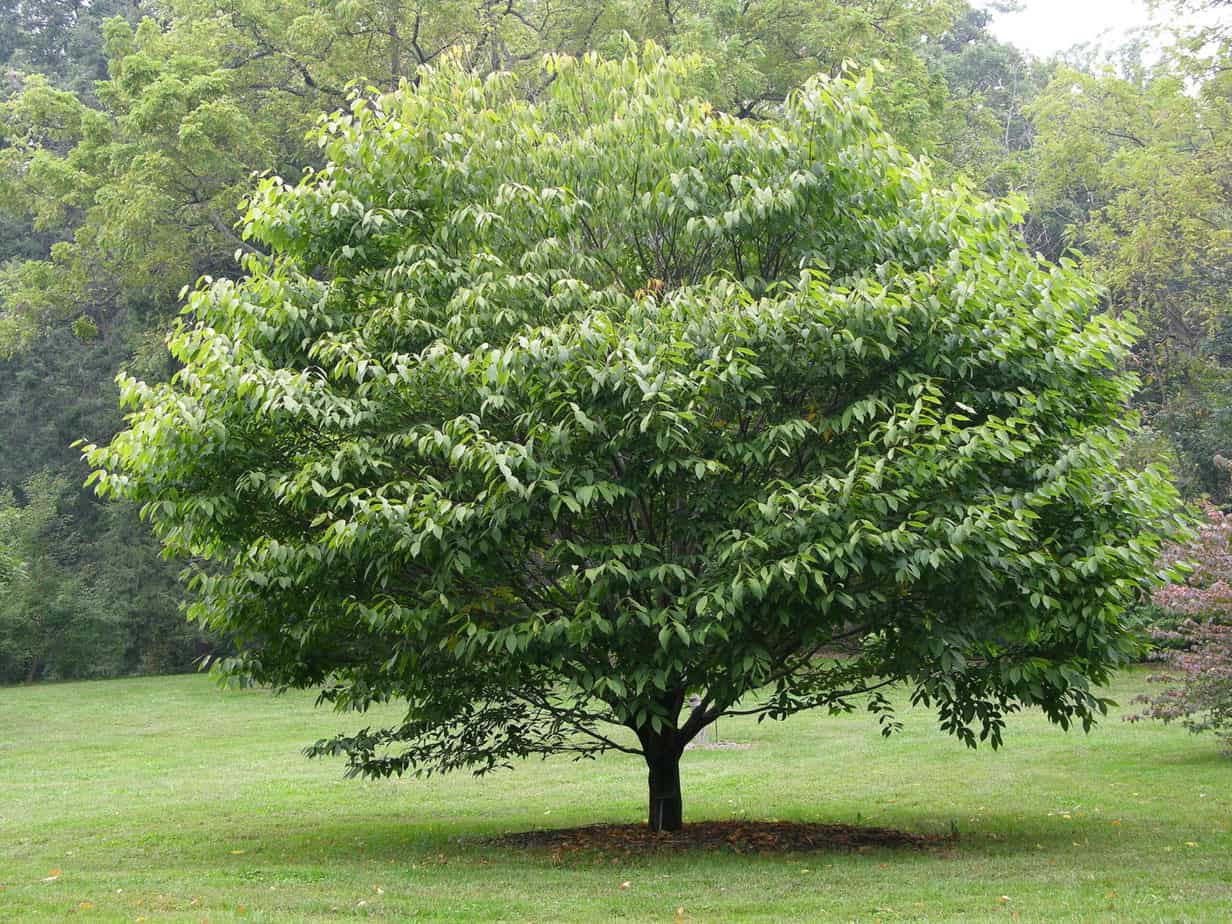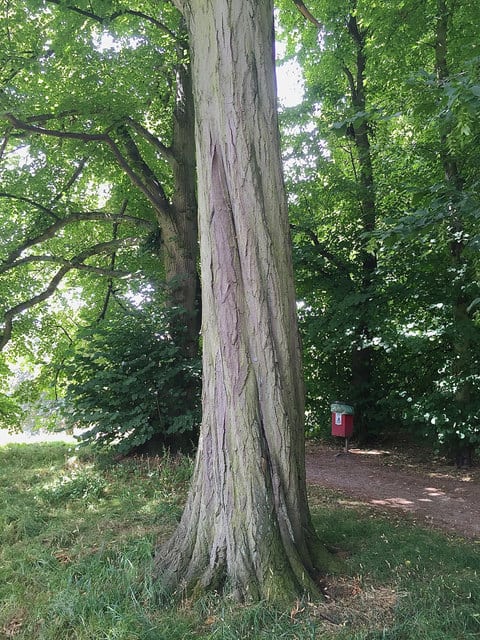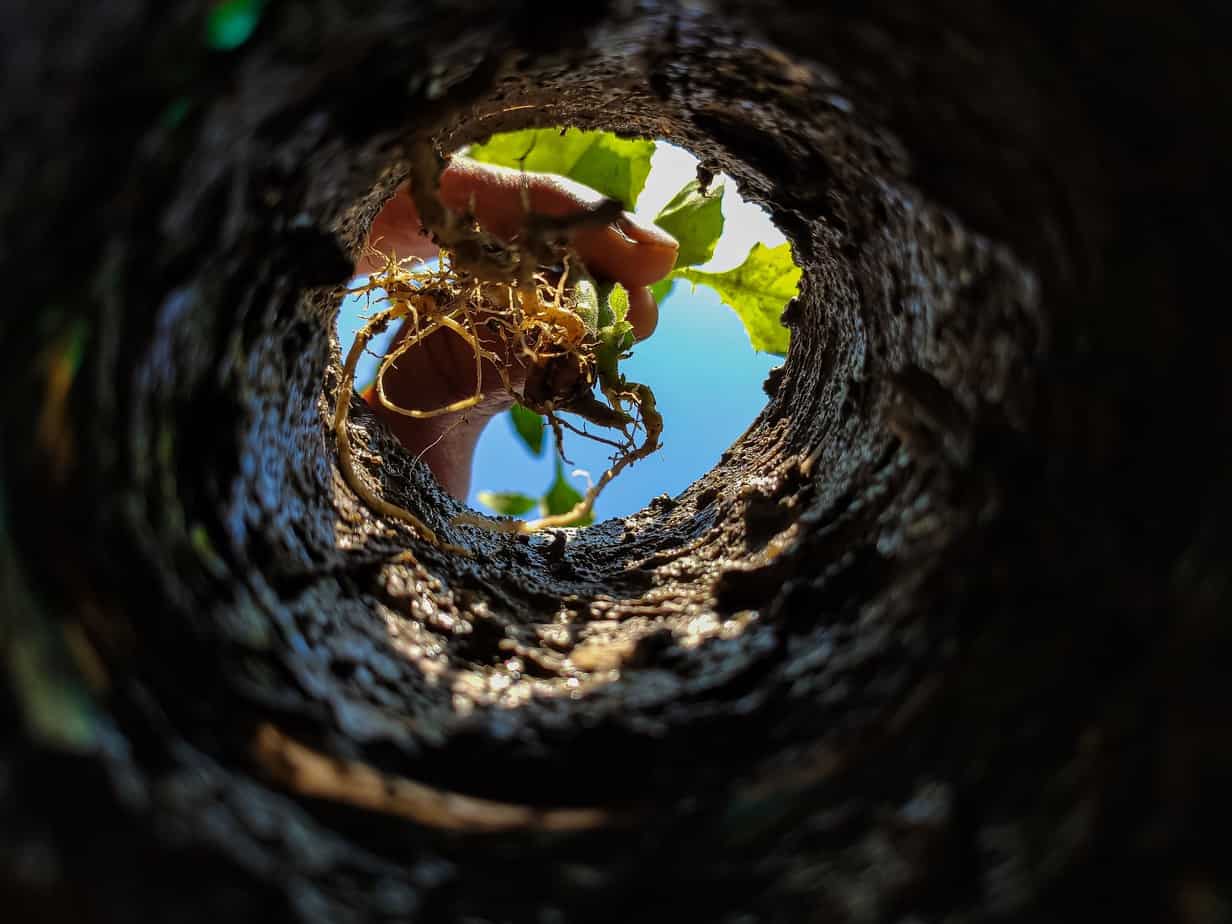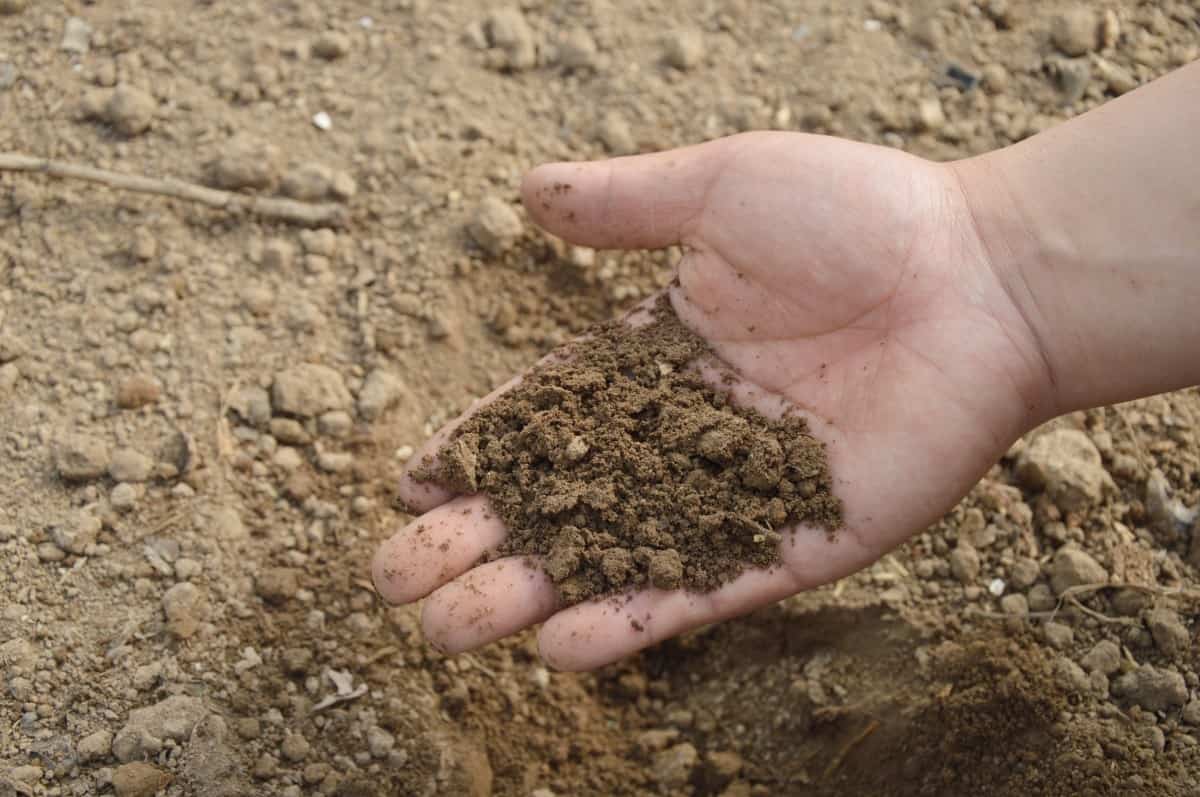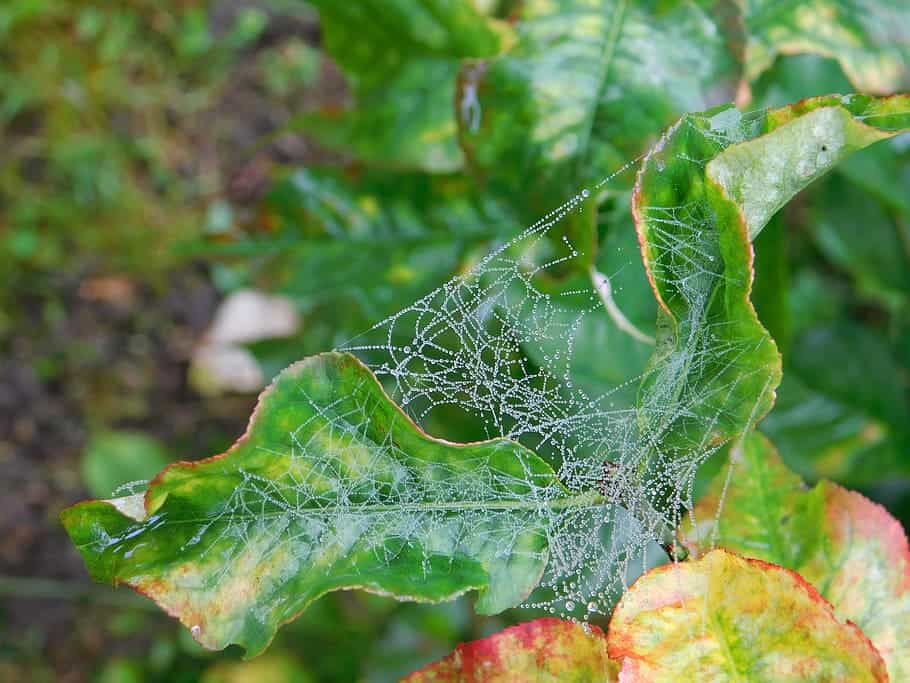- Boxwood Tree Guide: What You Need to Know about Boxwood Shrubs - April 10, 2022
- Hornbeam Tree: All You Need to Know - April 8, 2022
- European Fan Palm: All You Need to Know - March 30, 2022
The Hornbeam tree is a hardwood tree that belongs to the flowering genus Carpinus and the Betulaceae (birch) family. The tree boasts 30-40 species that grow all over the temperate areas of the Northern Hemisphere, and most species are found in East Asia, especially China. Just one hornbeam tree species originates in eastern North America, with just two species originating in Europe.
The hornbeam tree can survive in various environments but flourishes in North America, Europe, and Asia. In the US, the tree thrives in Texas, Georgia, Wisconsin, Iowa, Minnesota, Michigan, Maine, Oklahoma, Arkansas, and Missouri. The tree thrives best in deep, moist, fertile, acidic soil that drains well. It also flourishes in partial sunlight to full sunlight conditions.
In this post, we’ll discuss different hornbeam tree species, including the characteristics of these species, the uses of the hornbeam tree, as well as how to plant and care for the hornbeam tree.
Our Bottom Line Upfront:
Also commonly known as ironwood or musclewood, the hornbeam tree is a hardy, tough hardwood tree that boasts 30-40 species across most of the North Hemisphere’s temperature regions. This slow-growing tree provides timber and serves ornamental purposes in many home landscapes.
The hornbeam prefers organically fertile soil and grows in partial shade or full sunlight conditions, from USDA hardiness zones 3 to 9. Most hornbeam varieties are low-maintenance, requiring minimal maintenance, which includes watering, fertilization, and pruning.
What’s the Hornbeam Tree?
Hornbeam, also called musclewood and ironwood, is a tree with a strong type of wood, which seldom splits or cracks. Early innovators found the hornbeam tree useful for making bowls and dishes as mallets and other woodworking tools.
The hornbeam is a small tree that serves multiple purposes at home. When growing in direct sunlight, the hornbeam has a dense, tight growth pattern. Under the partial shade, the tree has a magnificent, open shape. You’ll enjoy its dangling, hop-like fruit until fall.
During autumn, the hornbeam tree blooms with colorful leaves in shades of red, yellow, and orange. The tree provides excellent shade for humans and wildlife alike. Small mammals and birds find nesting sites and shelter in the branches and feed on the nutlets and fruits that develop later in the season.
The hornbeam tree is great for attracting wildlife, such as some highly coveted swallowtail butterflies and songbirds. White-tailed deer, rabbits, and beavers feed on the twigs and leaves. Beavers use the hornbeam tree extensively, perhaps because it grows in abundance in habitats teeming with beavers.
Moreover, kids love hornbeam trees as they have low-lying, strong branches that are easy to climb.
Hornbeam Tree’s Appearance
The hornbeam tree is verdant but not that splendid. The tree is small and slow-growing and is often considered a shrub, rarely growing up to more than 30 feet tall. Also, its wide canopy adds to its stout appearance, spreading up to 20 feet. Here are other notable distinctive features of the hornbeam tree.
Trunk
In some cultures, the European hornbeam is sometimes considered mystical, thanks to its whitish, bent trunk which supports numerous branches. The American hornbeam is called water beech or may have a gray-blue bark, which makes it referred to as blue beech.
In addition, the hornbeam tree is often known as “ronwood'” due to its rock-hard timber. It’s hardly ever used for carpentry due to the challenge of working such hardwood. But some people use its wood for stuff that needs to be long-lasting, such as gears, parquet flooring, pegs in basic machines, and mallets. It can also be molded into a hardwood pole.
The American hornbeam features a smooth muscular or sinewy trunk, which splits into slim and fairly pendulous branches.
Leaves
The leaves of the hornbeam tree are bright green to dark green, ovate, and feature a toothed tip and sharply serrated margins. The leaves have a deep vein network, giving them a pleated or quilted look. Measuring 5-10 cm (2”” 4””, the unique leaves turn into shades of red, yellow, or orange in the fall.
Flowers
The flowers of the hornbeam tree are drooping slim catkins with a green-yellowish shade. The cylindrical, slim flower clusters develop in the spring without any distinctive characteristics. The female yellow flowers measure 7.5-10 cm (3”” 4”” long, while male flowers are 3.8 cm (1.5”” long.
Fruit
The hornbeam tree has a small, brown, oval fruit that measures 1.2 cm (0.5”” in diameter and is contained in a paper-like serrated enclosure known as a samara. The fruits of the tree appear during fall and sometimes remain throughout winter. Moreover, the fruits attract birds and small mammals.
Bark
The hornbeam tree has a distinctive smooth blue-gray or gray bark that develops unique fluted ridges and furrows with age. The bark is fairly thin and is easily damaged. In young hornbeams, the bark is grayish-brown with no furrows.
Hornbeam Varieties
It’s easy to identify a hornbeam tree in the landscape. The tree has a twisted, short trunk with spreading uneven branches, creating a dense oval or vase-shaped canopy. It has unique ovate leaves that look pleated, distinctive gray or gray-blue bark, brown papery samaras, and drooping yellowish flowers (catkins). In the fall, the tree goes golden yellow.
There are 30 to 40 different varieties of the hornbeam tree growing worldwide, but the most common species are:
American hornbeam:
The American hornbeam is considered a perennial tree and features dense green foliage and tiny, unremarkable orange flowers. While this species grows slowly, it may reach a height of almost 30 feet. The American hornbeam also has brown seeds, which don’t serve any useful purpose except as food for birds.
European hornbeam:
The European hornbeam is a shallow-rooted tree that features a bunch of attractive green leaves and low branches. This hornbeam species responds very well to pruning and is also grown as a shrub. Landscapers love the European hornbeam as it’s easy to plant. In addition, its ability to flourish as a property border or hedge is unrivaled.
Japanese hornbeam:
The Japanese hornbeam sports narrow, long dark green leaves in the summer. In the fall, the leaves turn yellow. This vase-shaped hornbeam is much shorter than its counterparts, but its root system isn’t destructive and its limbs are quite flexible.
The Japanese hornbeam is usually found in urban environments because its flimsy leaves are swept up easily and don’t choke storm drains. Thanks to its small size, the tree can grow freely without getting in the way of power lines in cities. In some cases, people often prune the Japanese hornbeam to create a bonsai.
Most hornbeam tree species are low-maintenance. They require minimal care, which includes regular watering. But if you want to trim the hornbeam into an ornate shape, you’ll need to prune it regularly.
Hornbeam Tree Uses
Hornbeam trees yield a very tough wood, hence its “”ronwood””moniker. Hornbeam is seldom used by carpenters, in part due to the challenge of working it.
However, hornbeam wood is used to create tool handles, carving boards, coach wheels, hand plane soles, shoe lasts, piano actions, and other items that require the use of very tough wood.
Also, hornbeam wood can work like gear pegs in basic machines, including conventional windmills. The wood is sometimes fashioned to produce hardwood poles. Moreover, it’s used for creating chess pieces and in parquet flooring.
Planting and Caring for the Hornbeam Tree
The growing conditions of the hornbeam tree are found almost all over the southernmost regions of the United States, from USDA hardiness zones 3-9. The tree grows in partial shade or full sunlight and prefers organically rich soil.
The hornbeam tree is hardy and resilient when mature, but seedlings and seeds need a bit more attention and care.
Soil Conditions
The hornbeam tree prefers organically rich soil that retains moisture well. This also reduces the need for additional watering. Mature hornbeam trees can withstand additional extended spells without water, but younger plants need frequent irrigation, particularly in dryer seasons.
The best soil to grow hornbeams on is loam soil, which is a mixture of clay, silt, and organic matter.
Planting Hornbeams
Some people prefer planting hornbeams from nursery-grown seedlings. If you have the commitment and patience, though, you can grow your hornbeams from seeds.
Hornbeam seeds have a greater chance of germinating if you plant them in the autumn when the seeds fall. Stored and dried hornbeam seeds usually go dormant.
To plant hornbeams from seeds:
- Fill 5-inch containers with loam soil
- For each container, plant two seeds
- Spread some compost on top
- When the compost is dry, do some irrigation
- The seeds should germinate at the start of spring
- Keep the seedlings somewhere partially shaded
Once the seeds germinate, you should be able to transplant the seedlings in the summer. Select an outdoor location that’s a bit brighter and warmer than the previous one, but not in direct sunlight.
The purpose of your hornbeams will determine their spacing, usually about 7 meters apart, a bit closer if you use the hornbeams as hedges, or sometimes even as close as 2 meters apart for a thicker hedge.
Fertilization
With good soil, you won’t need to fertilize your hornbeam trees. Fertilization could be required when the foliage gets pale, or if the plant isn’t growing as expected. Additional fertilization may be required during winter.
Watering
If there’s no rain, you’ll need to irrigate young hornbeams regularly. However, they can withstand long spells between watering sessions as they age.
With organic soil that retains moisture well, you can reduce the need for additional watering. You don’t have to fertilize hornbeams growing well in good soil.
Pruning
Hornbeam easily clips and also serves decorative purposes such as creating the Japanese bonsai. You need to prune young and mature hornbeams depending on your aim of planting them.
For good health overall, the tree won’t need much pruning. Since it’s a hardy species with sturdy branches, it hardly ever needs any maintenance. Hornbeam hedges may require standard maintenance of hedges.
Common Hornbeam Tree Problems
Hornbeams are normally hardy and resilient. But just like any other plant, you might encounter some problems when growing them, from simply annoying or unsightly ones to more serious problems that could endanger the plant’s health and life.
Here are some common problems associated with hornbeams and potential ways to solve them.
Heart Rot and Decay Fungus
Heat rot and decay fungus affect the life of European hornbeams by weakening their structural support system. This is very serious as the infection may be invisible unless you cut the tree to see the rot inside its trunk. Heart rot and decay fungus are not only dangerous for the tree’s life, but will also be a danger that might cause damage to properties to close by, or even injure people.
To prevent heart rot and decay fungus from attacking your hornbeams:
- Protect your hornbeams from injury
- Eliminate pests as well as other problems before they worsen
- Remove dead branches immediately
- Water regularly (the disease is likely to develop in unhealthy and water-starved hornbeams)
Root Rot
Hornbeam trees are prone to root rot. This problem is very serious if left untreated as it kills not only the root but also the trunk. Symptoms of root rot include discolored leaves, early falling of leaves, death of branches next to the top of the tree, and growth of mushrooms near the bottom of the tree.
To prevent root rot in hornbeam trees:
- Water regularly
- Ensure the soil is well-drained
Powdery Mildew
Another fungal infection that affects different hornbeam tree species is powdery mildew. IIt’shighly contagious and might infect other trees and plants via spores. Symptoms of powdery mildew include a white powdery substance covering the trunk, leaves, flowers, and other areas of the tree; early falling of leaves; and discoloration of leaves, which includes yellowing and browning.
For European hornbeams that are already affected by powdery mildew, applying copper or sulfur fungicide on a cool, calm day can help treat the problem.
To prevent powdery mildew:
Be vigilant and ensure that your hornbeams aren’t subjected to too much humidity and moisture, especially those growing in shaded locations because this is the ideal condition for powdery mildew to develop.
Canker Disease
If left untreated, canker disease might lead to the death of your hornbeam trees. Symptoms of canker disease in hornbeams include a sunken area with dead tissue in the branch or trunk and discoloration of leaves on the affected branch or trunk.
Canker disease treatment involves creating cuts on healthy areas of the tree away from the disease. If the disease affects the main trunk, pruning won’t help much.
To treat canker disease, apply an organic slow-release, all-purpose fertilizer like Espoma Organic Tree-Tone Plant Food to help boost the overall health of the hornbeam and help it fend off the disease. Make sure to not over-fertilize, though.
To prevent canker disease from attacking your hornbeams: Regularly prune your hornbeams, especially the dying or dead branches, twigs, and leaves.
FAQs
Answer: No, hornbeams don’t shed their leaves. The fast-growing, green-leafed tree slowly develops leaves throughout April, which turn brown in October. The tree then keeps its dead leaves all through winter.
Answer: Yes, the hornbeam tree is grown in Australia but not that widely.
Answer: The hornbeam tree is a semi-evergreen species whose hedging keeps its leaves throughout the winter, which then turn into rich shades during the autumn. The hornbeam tree grows lovely flowers in late spring to autumn, which develop into fruits that wildlife love.
Answer: In the UK, hornbeam trees have a fairly slow rate of growth, reaching 6 meters tall and 4 meters wide in 10 years. The trees reach 11 meters tall and 6 meters wide in 20 years, and finally 25 meters tall and 20 meters wide when mature.
Young hornbeams have the shape of a pyramid, getting rounded as they age. They can grow in partial shade or full sunlight and can survive in any climatic condition or soil.
Answer: A tonic made out of the hornbeam tree is known to ease exhaustion and fatigue, while its leaves are said to help heal wounds and stop bleeding.
The Takeaway on Hornbeam Tree
The hornbeam tree is part of the Carpinus genus and Betulaceae (birch) family of trees. A beautiful tree with a splendid shape, it’s one of the most popular decorative landscaping trees in the world. The hornbeam is a popular street tree in big metropolises but is also found in suburban spreads and parks to add charm and beauty. Children are fond of hornbeam trees thanks to their easy-to-climb, dense, low-lying branches.
When it comes to classifying plants, people often mistake the hornbeam tree for a shrub, but it’s a member of the same family as hazelnut and produces inedible wrinkly brown nuts. Of its tens of species, the European hornbeam is the best option for many people thanks to its narrow canopy, which you can clip easily into a neat, tight hedge.


